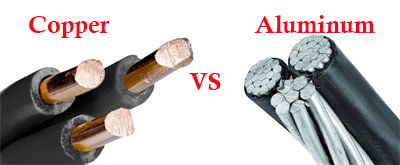Part One: Introduction to Copper Wire and Aluminum Wire
Copper wire and aluminum wire are two common conductive materials used in electrical engineering. Known for its good electrical conductivity and resistance to oxidation, copper wire is the material of choice in traditional electrical systems. Aluminum wire is favored for its light weight and low cost. Enameled wire is another type of wire whose surface is covered with a layer of insulating paint to prevent short circuits and corrosion of the insulating material.

Part 2: Dimensions of commonly used copper and aluminum wires
Copper and aluminum wire size selection depends on the electrical system needs of the specific application. Typically, copper wire diameters range from 0.1mm to 3.0mm, while aluminum wire diameters typically range from 0.5mm to 5.0mm. Selection of these dimensions involves factors such as current transfer, electrical resistance, and system design.
Size is also a key consideration in enameled wire applications. Common enameled wire diameters range from 0.1mm to 2.0mm, which makes enameled wire suitable for scenarios that require flexibility and insulation properties, such as windings of motors and transformers.
Part 3: Why
aluminum wire is more widely used than
copper wireAlthough copper wire has advantages in conductivity, aluminum wire is more widely used in some applications due to its lightweight and low cost. First, aluminum is only about one-third as dense as copper, which means using aluminum wire can significantly reduce the weight of electrical systems, which is a clear advantage for equipment and structures that need to be moved or suspended.
Secondly, the price of aluminum wire is relatively low, which makes it more popular in some cost-sensitive projects. In large-scale projects such as buildings and power transmission lines, the use of aluminum wire can significantly reduce costs while maintaining reasonable conductive properties.
In addition, aluminum wire has good thermal conductivity and helps dissipate heat, which is particularly important in some electrical equipment. In comparison, copper wire has poor thermal conductivity and can cause equipment to overheat under high load conditions.
Part 4: Differences in Applications of Copper Wire and Aluminum Wire
There are some obvious differences in practical applications between copper wire and aluminum wire. First of all, copper wires are often used in situations that have high requirements for electrical conductivity, such as high-performance electrical equipment and precision instruments. The superior electrical conductivity of copper wire makes it the first choice in these areas.
In contrast, aluminum wire is more commonly used in applications that do not require high electrical conductivity, such as building electrical systems and power transmission lines. In these applications, cost and lightweight are more important, and aluminum wire meets these needs.
Generally speaking, copper wire and aluminum wire each have their own advantages and applicable occasions. When choosing which wire to use, factors such as the requirements of the specific application, cost and performance need to be considered to achieve the best electrical system design.
